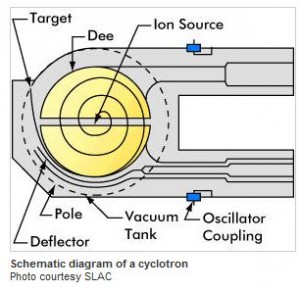Albright Rushes to CNN With New Satellite Imagery Claims on Parchin After Debunking
Yesterday, in a post titled Rumored Satellite Imagery of Parchin “Clean-Up” Fails to Materialize, Claim Debunked, I pointed out both Gareth Porter’s debunking of the “Parchin is being cleaned up” claim and added further evidence against the claims that Parchin was being cleaned of evidence from work to develop a neutron trigger device.
It appears that David Albright of the Institute for Science and International Security was unable to remain silent in the face of my statement that satellite imagery to back up the claims that Parchin is being cleaned has not been produced for inspection. My post went up before 10 am yesterday, and at 6:05 pm, CNN’s Security Clearance blog put up a post with “new” claims from Albright about satellite imagery from Parchin. Albright’s news is that he claims to have identified the building where work on a high-explosives-based trigger for a nuclear weapon is alleged to be taking place.
Albright is now trying to move the story back to trigger device research being high-explosives based, while the AP’s George Jahn’s claims that Porter was debunking relate to a possible neutron trigger. As I pointed out in yesterday’s post, the concept of “cleaning” away evidence from work with a radioactive trigger device is nonsense, as traces of the radioactivity would still be left behind. The Iranians were also quick to point this out, as cited in the post.
CNN’s “scoop” from Albright:
In an exclusive interview with Security Clearance, David Albright, president of the Institute for Science and International Security, said commercial satellite imagery shows a building on the sprawling Parchin military complex just south of Tehran that may be the location of a high-explosive test chamber.
Albright, who is a former U.N. weapons inspector, and his colleague Paul Brannan said in an analysis provided to Security Clearance that the building is notable because it “is located on a relatively small and isolated compound within the Parchin military site and has its own perimeter security wall or fencing. A berm can be seen between this building and a neighboring building.”
The CNN blog post then goes on to note that although Albright and ISIS have been scouring all the satellite images they can find, they can’t confirm the claims of cleaning activity at Parchin.
Over at Moon of Alabama, b has noted that the IAEA visited Parchin twice in 2005, but CNN cuts that down to one visit: “The IAEA has had only one, limited tour of Parchin. That was in 2005.”
Also, more importantly, CNN is back to ignoring the fact that the high explosives work at Parchin is truly dual use technology. It was also pointed out by b that creation of nanodiamonds is actually the specialty of the expert the Iranians have employed in their high explosives work. CNN allows an unnamed US official to ignore the nanodiamond application and lie outright that the high explosives work can only be weapons-related:
The senior U.S. official also said the evidence is clear from this site that Iran had pursued a weapons program. “There is no other reason to conduct explosion compression in the context of Iran other than nuclear testing. There is only one thing they could be trying to simulate and that is a nuclear explosion,” the official said.
It’s so nice that CNN will allow a “senior U.S. official who would not speak for attribution because of the sensitivity of the information” to promote lies that have already been disproven.

